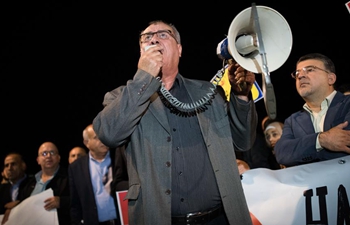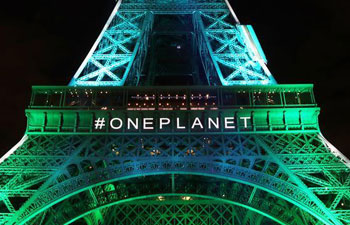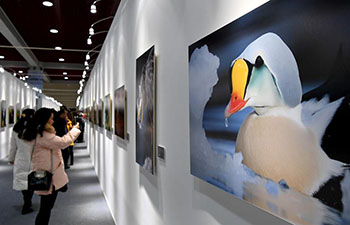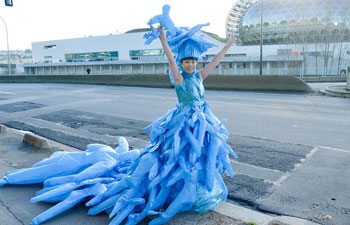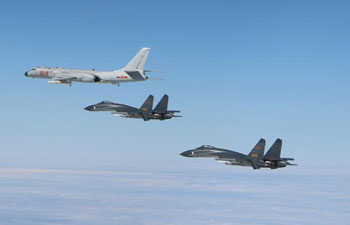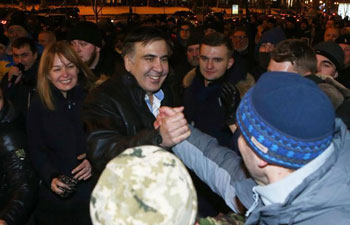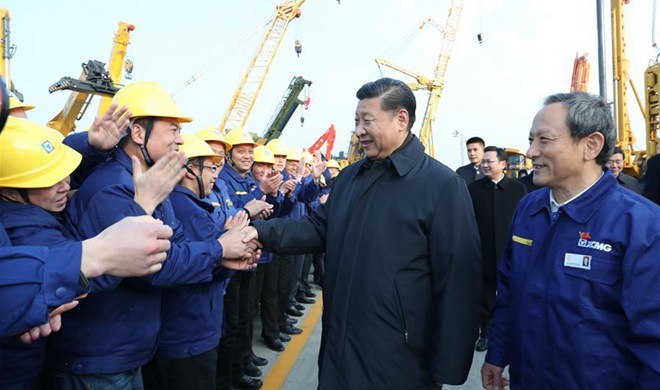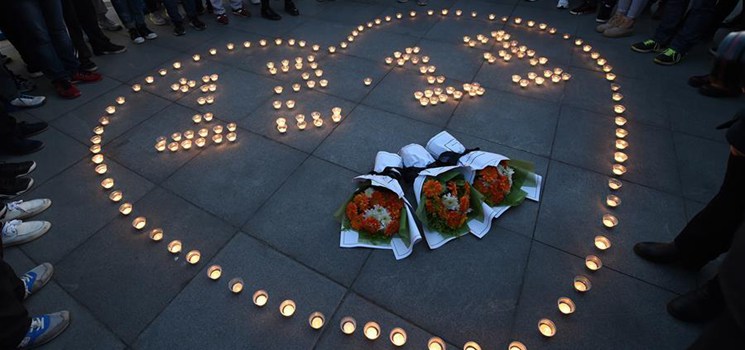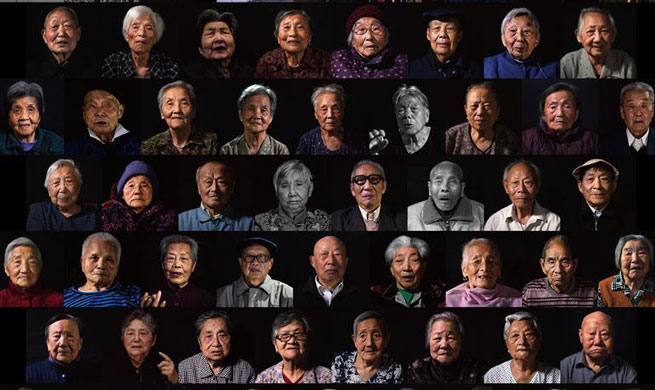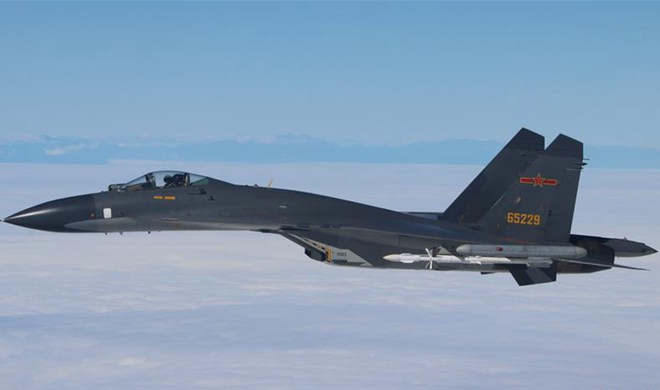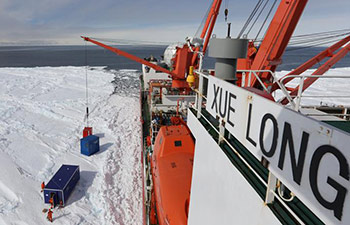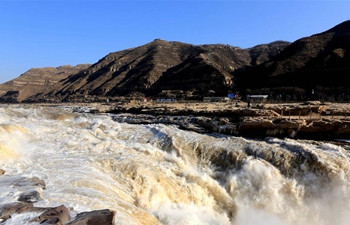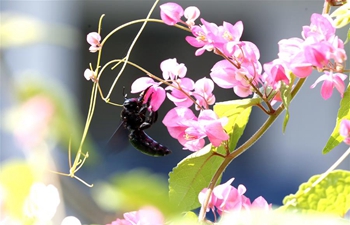TOKYO, Dec. 13 (Xinhua) -- The historical truth about the 1937 Nanjing Massacre is undeniable, Japanese scholars said in interviews with Xinhua ahead of the 80th anniversary of the heinous wartime atrocities.
The massacre, which lasted for more than 40 days following the Japanese troops' capture of Nanjing, the then Chinese capital, on Dec. 13, 1937, left more than 300,000 Chinese civilians and unarmed soldiers in Nanjing dead and 20,000 women raped.
The Japanese historical revisionists, however, have been trying to downplay the outrageous atrocities by claiming that the number of those killed was not as many as 300,000, or even completely denied that the massacre ever happened at all.
"Some claimed that the Nanjing Massacre was fabricated by the victorious nations to avenge Japan during the Tokyo Trials. But the fact is that the evidence about the Nanjing Massacre is both plentiful and irrefutable," said Masataka Mori, a former professor of Irenology at Shizuoka University.
"Eleven Nanjing Massacre survivors as well as witnesses from third-party countries testified during the trials, and there have also been plenty of written evidences, such as documents about the refugee camps and diaries of witnesses," he said.
"The historical revisionists have been using various methods, such as disguised displacement of concept, to distort the truth about that part of history," said Tamaki Matsuoka, a former primary school teacher who spent the past 30 years collecting and passing on the truth about the Nanjing Massacre.
She said one of the fallacies often mentioned by the ultra-right forces in Japan, who have tried to cover up the Nanjing Massacre, was that Nanjing "only had a population of 200,000 people" and thus the number of victims couldn't have been as high as 300,000.
"The fact is that the number 200,000 was rushed out by the Japanese troops and the puppet regime at that time in only three days and only covered the population of the refugee settlement, or international safety zone, which occupied about one-eighth of the Nanjing city," she said.
"This is a typical disguised displacement of concept. The ultra-right forces never mentioned that the number referred to the population of the safety zone, but just clinched to the number 200,000," she said.
Yutaka Yoshida, a professor from Hitotsubashi University, said that according to a letter of the Nanjing government on Nov. 23, 1937, there were some 500,000 people living in the city, and it was obviously wrong to claim there were only 200,000 people in Nanjing.
"Records from two charity organizations, Chongshan Hall and Red Wan Association which buried the bodies of the victims, showed that the two charities alone dealt with some 150,000 bodies, let alone the many other people who were killed by the side of the Yangtze River and whose bodies were dumped into it. It was a close estimation that some 300,000 were killed," said professor Mori.
Matsuoka stressed that the Japanese troops' notorious contest of killing 100 people using a sword, which had been questioned by ultra-right forces, including former defense minister Tomomi Inada, was indubitalbe.
Enroute to capturing Nanjing in 1937, two Japanese officers named Toshiaki Mukai and Tsuyoshi Noda held a contest to see who would be the first to succeed in killing 100 people with his sword.
"The competition was featured several times in Japanese newspapers including the Mainichi Shimbun and Asahi Shimbun at that time. The two soldiers also bragged about their killings later in Japan to their families," said Matsuoka.
While some ultra-right forces claimed that only Chinese soldiers were killed and it was "rightful" in the war, Matsoka said that in most cases the victims were Chinese civilians according to testimonies of Japanese veterans that she interviewed over the years.
"Evidences about the Nanjing Massacre have been fully proven by studies of both Chinese and Japanese scholars," said Atsushi Koketsu, professor emeritus of Yamaguchi University in Japan.
But why were such groundless denials of the massacre gaining popularity in Japan?
In Koketsu's opinion, it was partly due to the Japanese government's attempt to revise the pacifist constitution.
"The pacifist constitution was based on Japan reflecting upon the war, and those who were opposed to the Constitution resorted to denying facts about Japan's war crimes and its victimization of other countries," he said.
Another reason is that some Japanese people could not accept China's development in economy and other areas, and tried to kindle anti-China sentiment by questioning the authenticity of Nanjing Massacre, he said.
Masataka Mori said it was also due to the Japanese government's attempts to whitewash the war crimes in school textbooks.
"As the historical facts about the war history have disappeared from textbooks, the young people could hardly get to know about the true history, and have easily been brainwashed," he said.
In Koketsu's opinion, China and Japan could not build real mutual trust unless reconciliation was achieved by Japan squarely facing the history.
"We have to learn from the history and only by doing so can we preserve peace and create a better future," he said.
He also called upon the young people to learn more about history.
"Being indifferent to history is being indifferent to your own destiny. It's our responsibility as scholars, politicians and the media to pass on these messages to the younger generations," he said.




